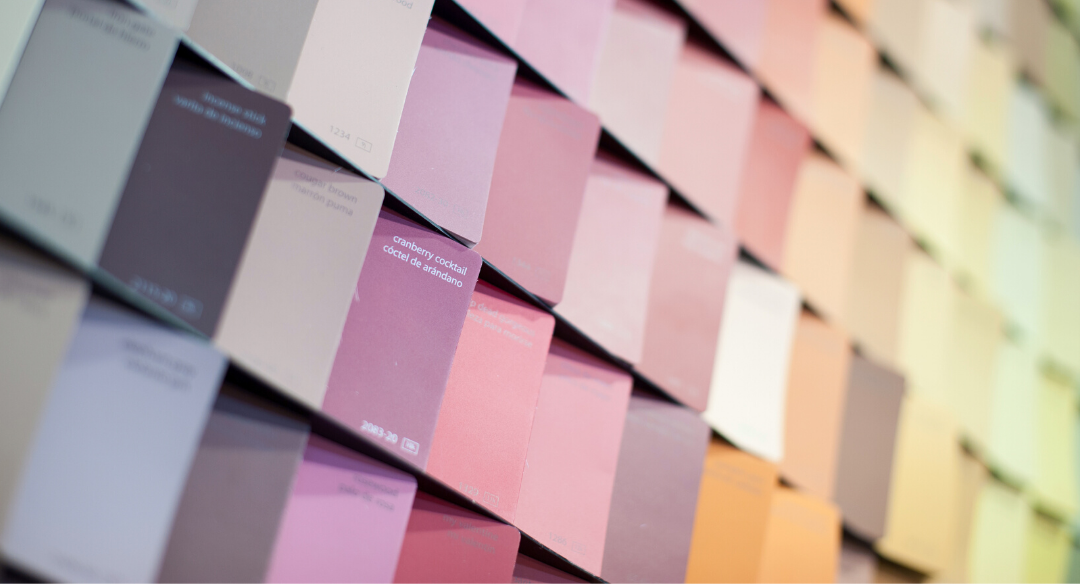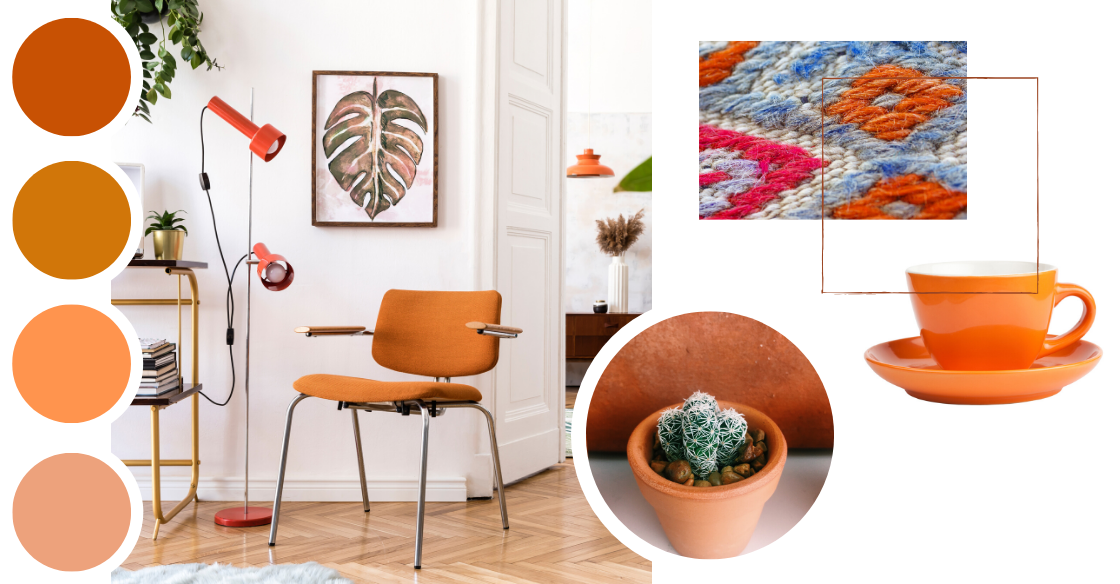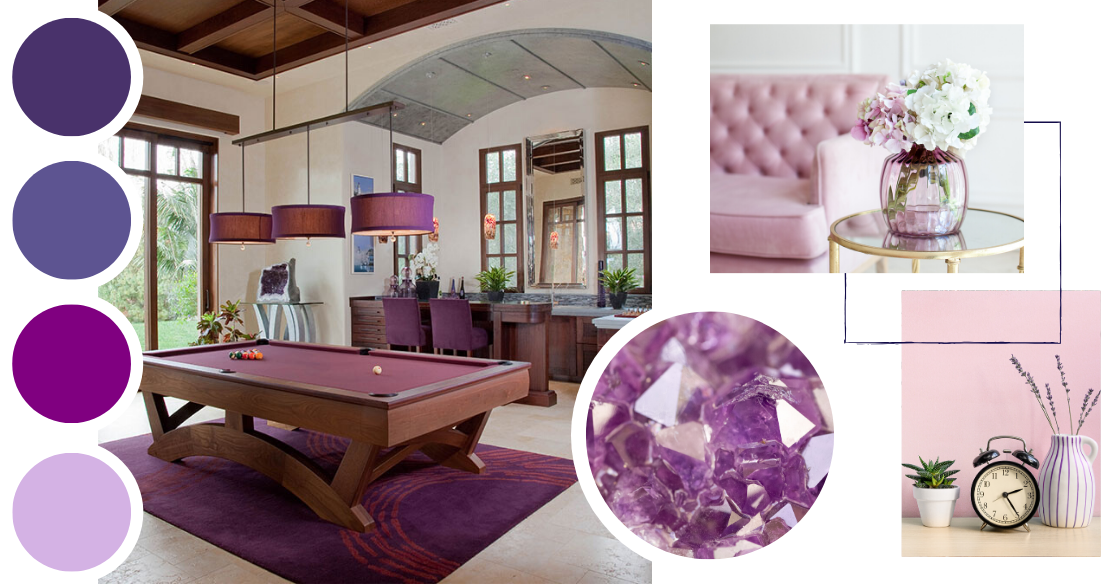Did you know that the colors you use in your home have a direct impact on your emotions? Color psychology suggests that color has the power to influence productivity, energy levels, mood and self-esteem. It’s been widely practiced in art, graphic design and marketing to engender specific feelings in consumers. Color psychology is a cornerstone element of interior design for aesthetic purposes, but also to fully optimize each space based on the feelings and emotions each color invokes.
Below you’ll learn exactly how color affects mood and how using color psychology in your home can set the tone of each space based on the atmosphere you want to achieve.
Red
As one of the most powerful shades in color psychology, red entices a wide range of emotions such as passion, excitement, and ambition. It’s ability to trigger energy makes it an ideal option for creative spaces like home offices and studios. Red has also been known to increase appetite – hence why it’s used in so many restaurants – making it a great choice for kitchen and dining areas.
Because red is associated with high-energy, it’s best to avoid using this shade in areas where you’d like to relax such as bedrooms, bathrooms and living areas. This powerhouse color will undoubtedly pack a punch wherever you use it in your design concept.

Orange
Orange is known to invoke fun, energetic enthusiasm in color psychology. Because of its bright and punchy vibrance, orange increases energy levels and boosts creativity. Studies show that the color orange can actually stimulate physical effects such as a heightened sense of activity, increased socialization, increased oxygen supply to the brain, and increased feelings of joy. Orange is a great option for home gyms or any other areas where you’d like a boost of energy and confidence. While too much solid orange in any space can be overwhelming, using softer shades like peach or apricot can make the color more manageable.
Yellow
As one of the most vibrant and joyful colors, sunshiney yellow is related to happiness and optimism. Although it’s the universal color for happiness, yellow is not considered to be a relaxing color because of its brightness. Much like red and orange, yellow is another stimulatory color that increases energy levels, making it ideal for high-traffic areas of your home like the kitchen or living room.
Too much yellow can be overpowering, so we recommend using it in small doses and in accent pieces like this sleek gold chair. Golden and mustard shades have become popular in recent years as a way to maintain an heir of chicness while bringing some light playfulness into the space.
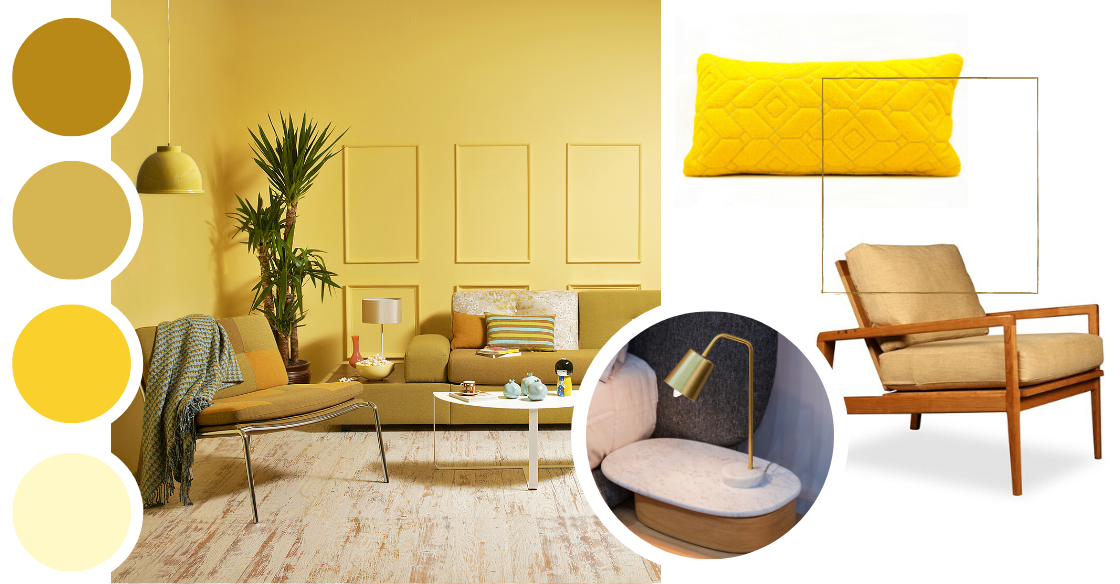
Green
Green stimulates feelings of balance, growth and restoration. Because of its relationship to nature, green offers an organic element that can breathe life into even the most industrial and urban spaces. All shades of green create an atmosphere of serenity and balance, but different hues create different moods and feelings.
Deep shades like emerald or forest green can add intensity and elegance to a space, making it great for master bedrooms, dens, and home offices. Lighter hues of green like sage, mint, and jade are more tranquil and can boost focus. These softer shades can be used virtually anywhere in your home and work especially well as paint colors. You can also play with layering different shades of green in a space to create dimension and depth.
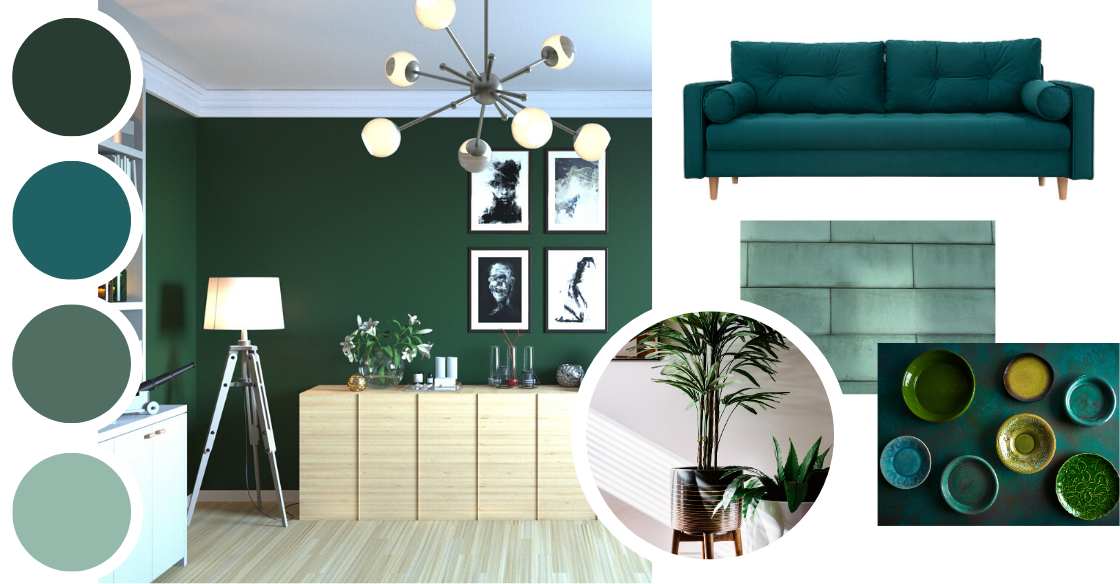
Blue
The peaceful, serene feeling that washes over you when you watch ocean waves roll in and out are linked to the calming effects of the color blue. Blue is associated with feelings of tranquility and neutrality. It’s one of the most thoroughly studied hues in color psychology because of its strong impact on emotion and mental well-being. Blue also provokes feelings of community and connectedness which is why its used so prominently in social media platforms and marketing efforts.
Ideal for bathroom, bedrooms, and communal living areas, blue can be used anywhere you need a touch of relaxation. Deeper hues like navy or royal blue add a more masculine feeling, while lighter hues like sky or turquoise connote femininity. Incorporating blue into your design scheme is one of the simplest ways to use interior design color psychology in your home.
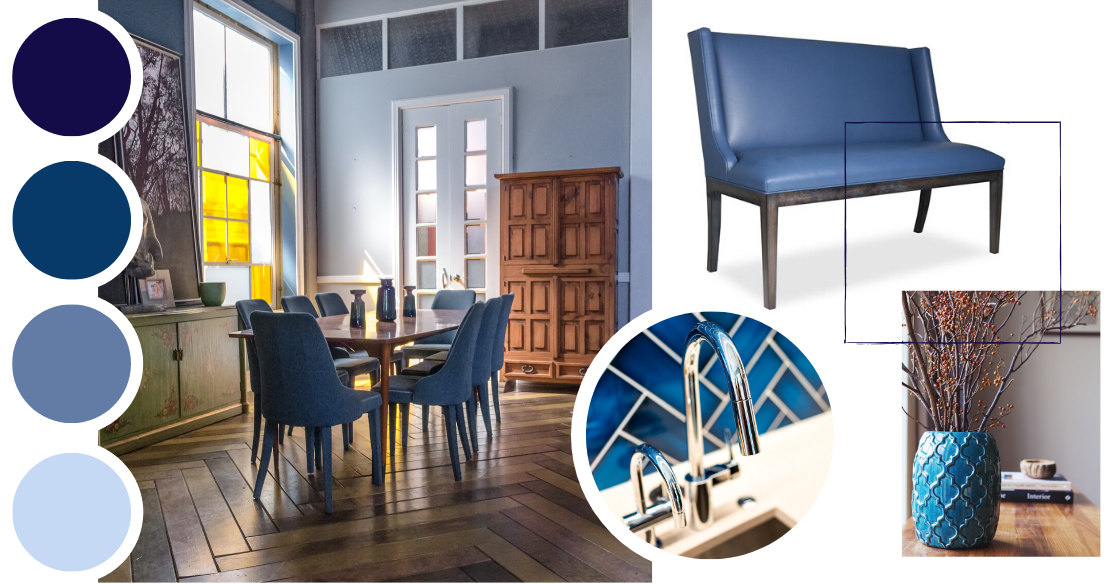
Purple
Purple, a regal and powerful color that gives rise to an array of emotions, is often an underutilized hue in interior design color psychology. As a color that can develop feelings of creativity, depth, and inspiration, purple works well in studios, home offices, craft rooms, and artistic spaces.
Because of its historic association with royalty, in darker hues, purple can make spaces feel more luxurious and sophisticated. Deep plums and wine shades add sensuality and mystery to a room, making it ideal for bedrooms, dens, and vanity spaces. Try out lavenders and lighter purple hues to create softness and playfulness in spaces like children’s rooms, playrooms, and the kitchen.
Pink
Pink is an innately feminine shade that represents love, nurturing, and softness. No longer a shade relegated to princess-themed rooms, pink has become one of the most popular colors in interior design because of its versatility. Blush, rose, and flamingo tones will instantly brighten up a room and add a feminine flair, while deeper shades like magenta and fuchsia can be used as pops of color to enhance maximalist designs. Coral and salmon can be gender neutral shades of pink that still offer the same brightness without being too overpowering. If you want to incorporate pink to elevate your design scheme, try using unique textures, patterns and color combinations.
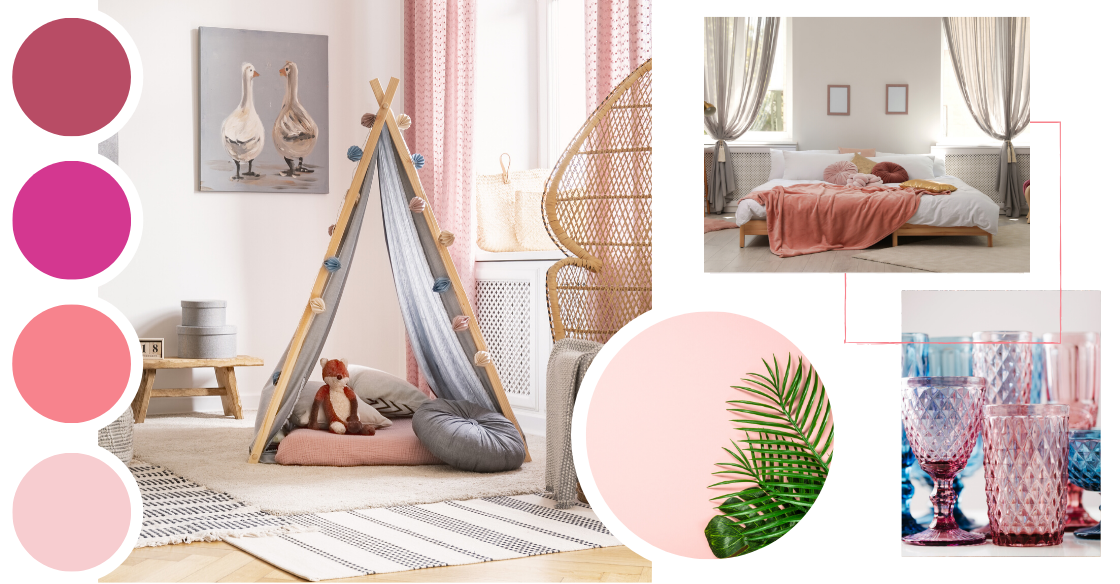
White
Denoting feelings of purity, cleanliness and innocence, white is by far the most versatile color to use in interior design. Minimalism experienced somewhat of a renaissance in the past decade, making clean white furniture, walls, and fixtures more popular than ever. While many people view white as refreshing and modern, some feel that it’s too sterile and cold. To avoid this issue, integrate pops of color throughout your home to create dimension and warmth like with this fresh and simple tufted bed. You can also use one pop of color in various shades or choose complementary colors like yellow and purple for accent pieces and walls.
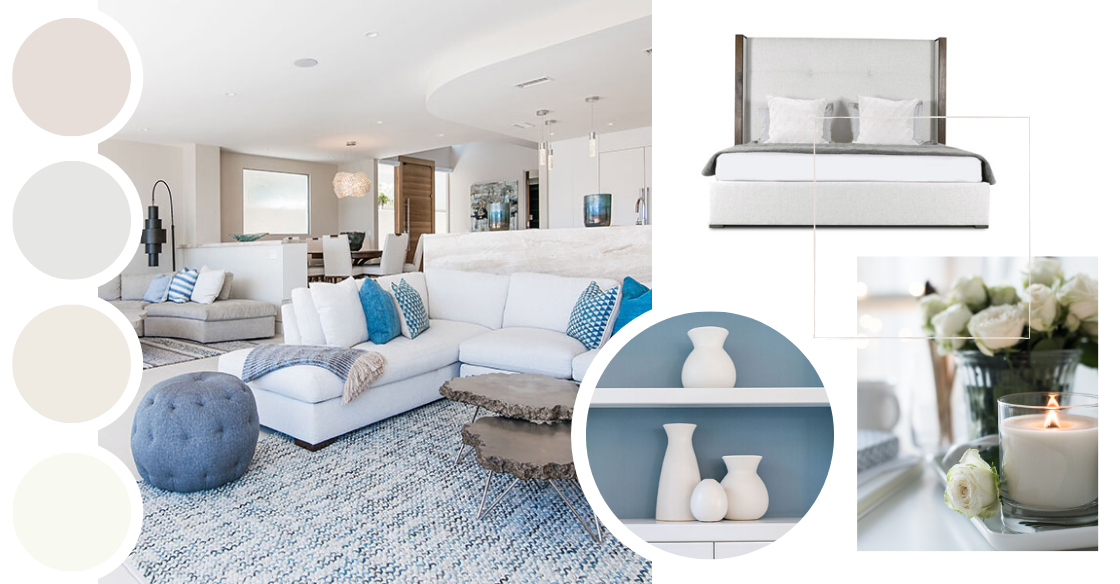
Black
A good rule of thumb: when in doubt go with black. This is true for clothing, accessories and interior design. Although it’s often associated with darkness in pop culture, in color psychology, black signifies power, mystery, depth, and drama. The neutral aspect of black gives it the versatility to work in any space, while offering stability and sleekness. Black is a great option for furniture, hardware, accents, and even wall colors when executed correctly.
Too much black can be overpowering and shrink a space, so use it to draw the eye to carefully selected, standout pieces like an elegant sofa. If you’re set on creating a broody, dramatic space, opt for an area that receives natural light and offset the darkness with white or other lighter colored accents. A timeless color that isn’t subject to fickle trends, black is always a safe go-to option.
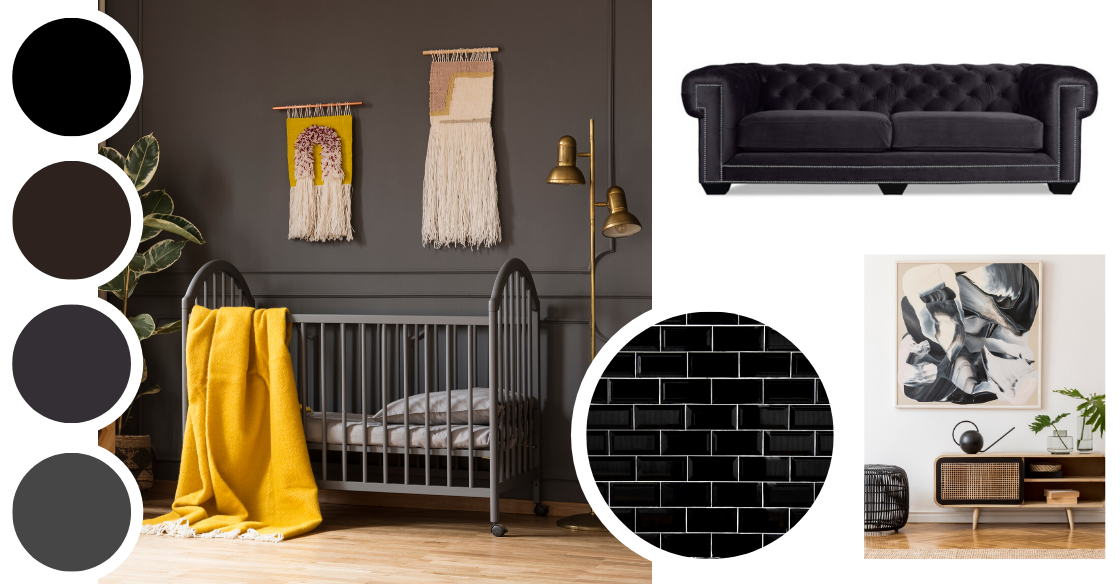
How Can Color Psychology Transform Your Home?
Taking the time to consider the effects of color psychology in your interior design efforts will help you to create the exact ambience you want in each space. While you should always choose colors that speak to you and make you feel comfortable, practicing color psychology will make your home both aesthetically pleasing and functional. Visit our online store for more inspiration on cultivating a balanced space or connect one-on-one with our expert designers to get started on effectively using color psychology in your home.

